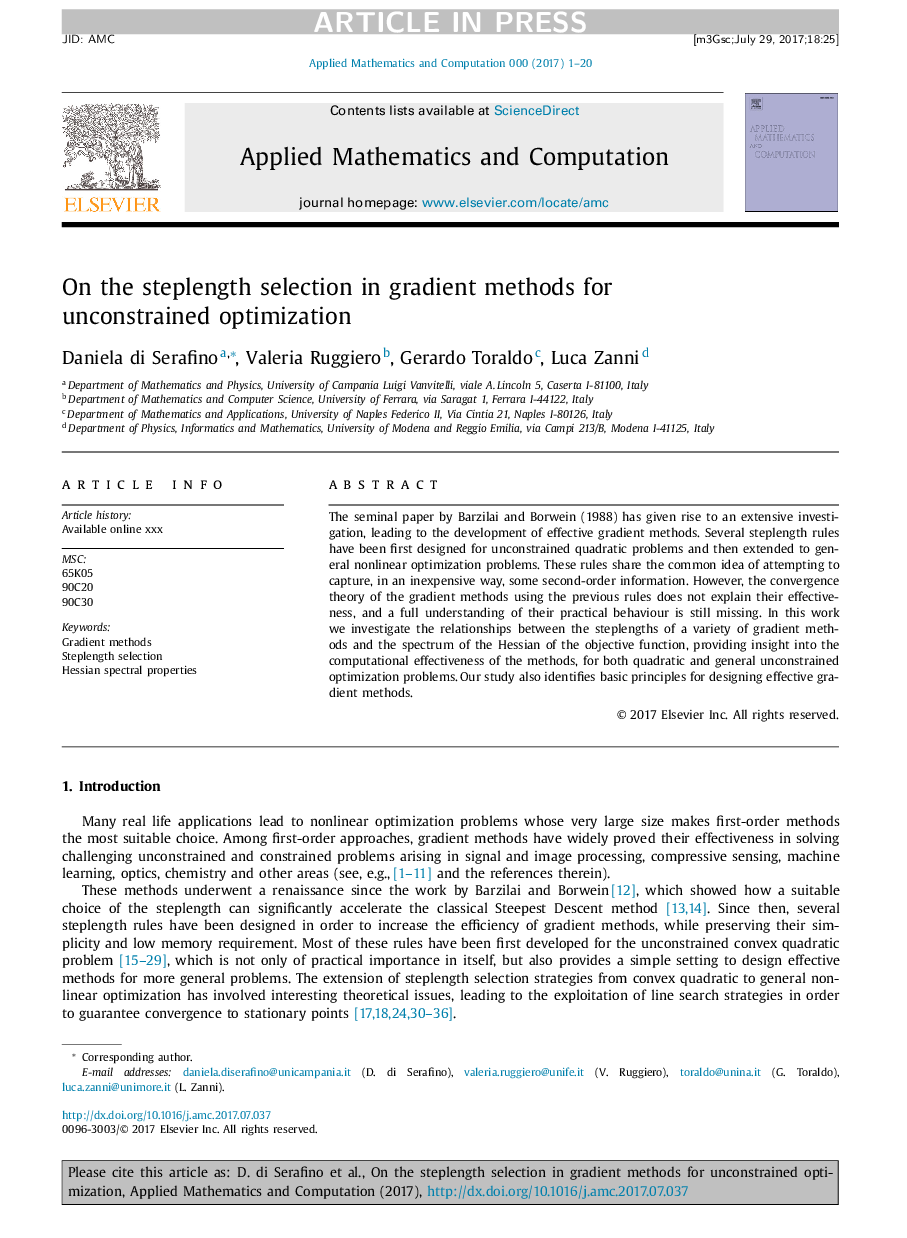| Article ID | Journal | Published Year | Pages | File Type |
|---|---|---|---|---|
| 8901589 | Applied Mathematics and Computation | 2018 | 20 Pages |
Abstract
The seminal paper by Barzilai and Borwein (1988) has given rise to an extensive investigation, leading to the development of effective gradient methods. Several steplength rules have been first designed for unconstrained quadratic problems and then extended to general nonlinear optimization problems. These rules share the common idea of attempting to capture, in an inexpensive way, some second-order information. However, the convergence theory of the gradient methods using the previous rules does not explain their effectiveness, and a full understanding of their practical behaviour is still missing. In this work we investigate the relationships between the steplengths of a variety of gradient methods and the spectrum of the Hessian of the objective function, providing insight into the computational effectiveness of the methods, for both quadratic and general unconstrained optimization problems.â¯Our study also identifies basic principles for designing effective gradient methods.
Keywords
Related Topics
Physical Sciences and Engineering
Mathematics
Applied Mathematics
Authors
Daniela di Serafino, Valeria Ruggiero, Gerardo Toraldo, Luca Zanni,
